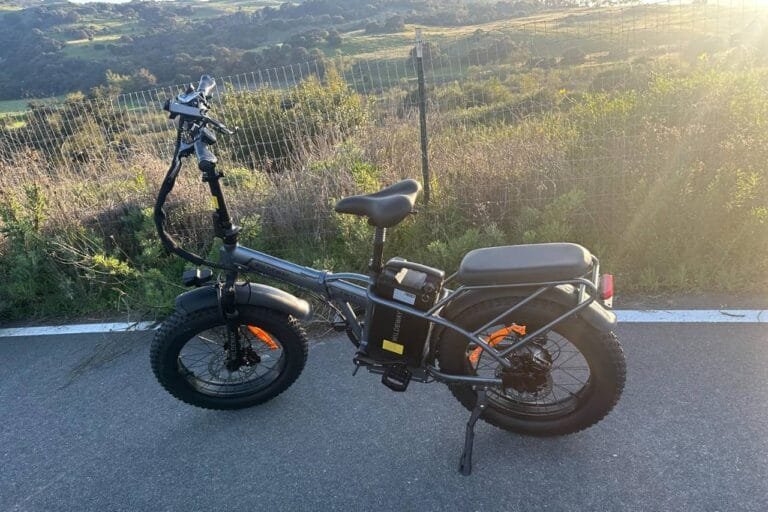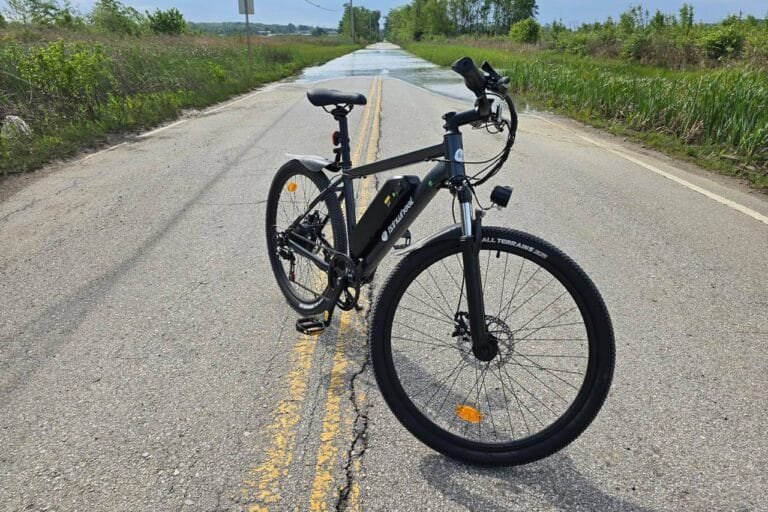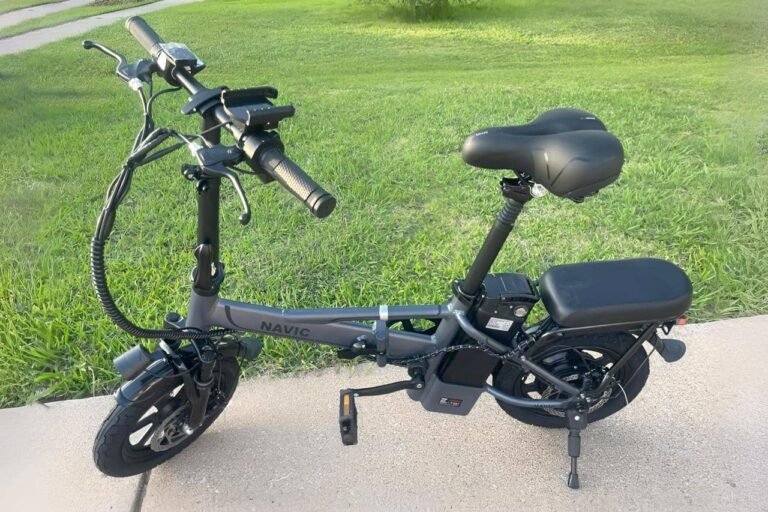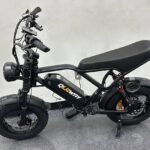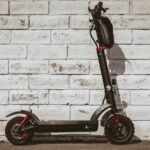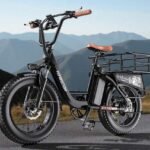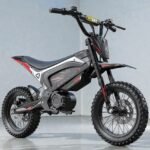![Best Electric Bikes Under $2000 in [year]: Real Range, Power, and Value Compared Top Sub-$2000 E-Bikes for Commuting & Trails: Batteries, Brakes, and Speed](https://goebikelife.com/wp-content/uploads/2025/09/Best-Electric-Bikes-Under-2000.jpg)
Top 3 Picks — Best E-Bikes Under $2,000 (2025)
Our quick verdicts: a balanced all-rounder, a value commuter, and a power pick for hills—compare at a glance.
![Best Electric Bikes Under $2000 in [year]: Real Range, Power, and Value Compared Cybervelo EK6 Max 2.0 — product image](https://goebikelife.com/wp-content/uploads/2025/09/Cybervelo-EK6-Max-EBike.jpg)
Cybervelo EK6 Max 2.0 — Balanced All-Rounder
- 48V 25Ah battery—long PAS range with fewer charges
- 1,000W hub (2,000W peak) for confident hill starts
- Class-mode support to keep 20/28 mph legal on paths
*Unlock speeds only where permitted. Keep Class-compliant on shared paths.
![Best Electric Bikes Under $2000 in [year]: Real Range, Power, and Value Compared Windone E2 — product image](https://goebikelife.com/wp-content/uploads/2025/09/Windone-E2-EBike.jpg)
Windone E2 — Value Commuter
- 500W cont. / 750W peak—easy city pacing
- 48V 13–15Ah options—lighter, budget-friendly
- PAS up to 28 mph (Class 3 mode) for faster commutes
![Best Electric Bikes Under $2000 in [year]: Real Range, Power, and Value Compared DAMSON RX30 — product image](https://goebikelife.com/wp-content/uploads/2025/09/DAMSON-RX30-EBike.jpg)
DAMSON RX30 — Power for Hills & Load
- Dual-hub punch (trim-dependent) for steep climbs
- 48V 30Ah battery supports long mixed-terrain days
- 26×4.0 fat tires add traction & stability off-pavement
Shopping for an e-bike in the $1,000–$2,000 band is where value and performance finally meet. You can now get powerful hub motors, big batteries (often 700–1,400Wh), hydraulic disc brakes, and real-deal frames with decent suspension—without spending boutique money. This guide cuts through the noise with clear picks, practical advice, and the gotchas to avoid so your new bike fits your body, your terrain, and your local rules.
Below you’ll find five strong candidates under $2,000 that cover different needs—range, hill-climbing, comfort, and overall value—followed by a deep buyer’s guide (motor types, battery math, braking, geometry, safety certifications, class rules, and more).
I’ve synthesized specs from manufacturers and retailers and flagged places where claims deserve a closer look. When in doubt, always verify battery capacity, speed class, and safety certification before you buy.
Quick Picks (Who Each Bike Is For)
- Best Overall Value: CYBERVELO EK6 Max 2.0 — big 48V/25Ah battery, strong peak output, and frequent sale pricing well under $2K make it the most balanced “do-most-things” pick.
- Best for Extreme Range Claims: FREESKY Swift Horse Pro — marketed with a 48V/30Ah Samsung-cells pack and high top speed; great on paper for long mixed rides. Verify local class limits.
- Best for Power + Payload: DAMSON RX30 — often listed with dual-motor punch and a very large 48V/30Ah battery; appealing for hills and heavier riders.
- Best Budget Trail/Commute Hybrid: Windone E2 — more modest battery options (48V/13–15Ah) but legit commuter/trail spec and 20”/26” fat-tire choices with PAS up to 28mph (check class rules).
- Proceed With Caution / Spec-Heavy Wildcard: EcoE EC-6650 — listings tout massive 60V/32Ah and 5,000W, but third-party testing has raised discrepancies; if interested, verify details and certification before purchase.
Important: E-bike “Class” designations control where you can ride (Class 1/2: 20 mph; Class 3: 28 mph). Many models can be unlocked above legal limits; keep them compliant for trails and shared paths.
How We Evaluated (and What to Expect Under $2,000)
In this price range you should expect:
- Motors: Rear hub motors from 500–1,000W nominal (peaks much higher), tuned for hill starts and cargo.
- Batteries: 48V systems are common, from ~13Ah (624Wh) up to 30Ah (1,440Wh). Larger packs = longer rides but heavier bikes.
- Brakes: Hydraulic discs are preferable for heavier fat-tire e-bikes; at minimum, strong mechanicals with large rotors.
- Suspension: Front suspension is common; rear suspension appears on more “all-terrain” models.
- Frames/Tires: Fat-tire (20×4.0” or 26×4.0”) for comfort and soft terrain; slicker 27.5″/29″ tires for efficient commuting.
- Safety: Look for UL 2849 (system) and UL 2271 (battery) certification, or a clear statement about compliance. It matters.
The Shortlist (Deep Dives)
1) CYBERVELO EK6 Max 2.0 — Best Overall Value
Why it stands out: It checks the big-battery box (48V/25Ah ≈ 1,200Wh), advertises 100-mile+ assist range and mid-30s mph capability, and is frequently discounted below $2,000 on the brand site. That combo—capacity, speed, and common sale price—makes it a versatile daily rider for mixed city/trail use.
Key claims & highlights
- 48V/25Ah removable battery, advertised up to ~100 miles (PAS).
- 1,000W (2,000W peak) hub motor; brand mentions 36 mph top speed.
- 8-speed drivetrain; 400-lb load rating noted on product copy.
Ideal rider: Commuters who want real range and power with occasional dirt-path exploring; taller/heavier riders who appreciate a stout chassis.
Reasons to buy
- Big battery for the money; fewer charge cycles on weekly routines.
- Strong hill starts and headwind performance vs. typical 750W bikes.
- Frequent promotions bring it comfortably under $2K.
Reasons to skip
- Heavier than commuter-focused 27.5″ models; plan storage accordingly.
- To ride legally on many paths, you may need a “Class-mode” (speed-limiting) setting. Verify how to lock it to Class 2/3.
2) FREESKY Swift Horse Pro — Best for Extreme Range Claims
Why it stands out: Marketed with a 48V/30Ah Samsung-cells battery (≈1,440Wh) and a powerful drivetrain, the Swift Horse Pro targets long-distance riders and bigger terrain days—on paper it promises top-tier range and pace.
Key claims & highlights
- 2,000W motor (brand references BAFANG), 48V/30Ah Samsung-cells battery, up to ~35 mph.
- Full-suspension fat-tire platform for mixed surfaces.
Ideal rider: Riders prioritizing long PAS days and mixed surfaces who still want strong acceleration and a plush ride.
Reasons to buy
- Oversized battery reduces “range anxiety” for hilly routes.
- Full-suspension comfort for rough bike paths and fire roads.
Reasons to skip
- Weight and tire drag are higher vs. city-slicker commuters.
- You’ll need to ensure compliance with local Class limits if the controller allows higher speeds.
3) DAMSON RX30 — Best for Power + Payload
Why it stands out: Listings often show a potent setup—dual-motor punch with a big 48V/30Ah pack—making it attractive for steep areas, off-pavement exploring, or riders hauling cargo.
Key claims & highlights
- 48V/30Ah (≈1,440Wh) removable battery.
- Frequently described with dual-motor capability and aggressive torque for hills (verify the specific trim you’re buying).
- 26″ fat-tire chassis for stability on varied terrain.
Ideal rider: Hillier locales, heavier riders, and anyone wanting “set-and-forget” climbing without mid-drive complexity.
Reasons to buy
- Serious climbing traction and torque when configured as dual-motor.
- Big battery supports longer rides with less PAS micromanagement.
Reasons to skip
- Dual-motor systems can add weight and complexity; assembly and cable routing matter.
- Check your local rules if the bike can exceed Class limits.
4) Windone E2 — Best Budget Trail/Commute Hybrid
Why it stands out: The E2 aims at practical commuting with optional fat-tire comfort, offering a 48V system (13–15Ah), PAS up to 28mph, and all-terrain readiness at a friendlier weight and price.
Key claims & highlights
- 500W continuous / 750W peak setup with 48V 13–15Ah battery options.
- Listed PAS up to 28 mph and ~46–60 miles PAS range (trim dependent).
- Available in 20″ or 26″ fat-tire formats (check the exact listing).
Ideal rider: Cost-conscious commuters and first-time e-bike buyers who want confidence on rough pavement, gravel, or light trails—without the heft of the biggest batteries.
Reasons to buy
- Sensible motor/battery pairing for daily riding.
- Feels approachable; the PAS class-3 capability (if present) helps with faster road commutes—within local rules.
Reasons to skip
- Smaller battery than the “monster-pack” bikes in this list; you’ll charge more often if you ride long distances daily.
- Fat-tire drag is higher than commuter slicks.
5) EcoE EC-6650 — Wildcard with Caveats
Why it stands out (and why to be cautious): Some listings tout very high specs—60V/32Ah (≈1,920Wh), fat tires, and 5,000W dual-motor power—numbers that dwarf typical sub-$2K bikes. However, third-party testers have flagged discrepancies between advertised and measured performance on similar listings. If this model interests you, verify voltage, capacity, speed class, brakes, and safety certification in writing before you buy.
Key claims & highlights
- Claimed 60V/32Ah battery and 5,000W dual-motor system on certain product pages.
Ideal rider: Only for buyers comfortable doing extra due diligence and inspections on arrival; otherwise consider the safer value picks above.
Reasons to buy
- If specs are verified, the battery capacity and power are exceptional for the budget.
Reasons to skip
- Inconsistent listings; verify UL and stated specs, or consider a more transparent brand.
Reality Check: Range, Speed Classes, and Safety
Understand Your Legal Class (and Why It Matters)
- Class 1: Pedal-assist only, up to 20 mph.
- Class 2: Throttle allowed, also limited to 20 mph.
- Class 3: Pedal-assist only, up to 28 mph (speedometer required in many places).
These determine where you can ride (multi-use paths, bike lanes, etc.). Many bikes can be unlocked above those limits—keep them compliant to avoid fines and trail bans. Laws vary by state/city; check your local rules.
Battery Safety: Look for UL 2849 + UL 2271
- UL 2849 evaluates the whole e-bike electrical system (drive unit, battery, charger) for fire/electrical safety.
- UL 2271 focuses on the battery pack itself.
Choosing products that state compliance with these standards (and provide documentation) reduces risk and may be required by landlords or insurers.
The Range Math (and a Simple Rule of Thumb)
Battery capacity (Wh) ÷ your typical consumption (Wh/mi) ≈ real-world range.
- Flat city rides on efficient tires: ~12–15 Wh/mi.
- Heavier riders, hills, fat tires, cold weather: ~18–25+ Wh/mi.
Example: a 1,200Wh pack ÷ 20 Wh/mi ≈ 60 miles of realistic mixed riding. Expect less if you ride fast or use throttle heavily.
What to Look For (and Why It Matters)
1) Motor Type & Power
- Rear hub motors dominate under $2K: simple, torquey off the line, low maintenance.
- Mid-drives appear rarely at this price; they climb efficiently but cost more and wear drivetrains faster.
- Wattage honesty: “Peak” usually doubles “nominal”; focus on the battery + controller pairing. A well-tuned 750–1,000W nominal hub with a large battery can outperform a “2,000W peak” bike with a small pack.
2) Battery & Charging
- Voltage (V) is “pressure,” amp-hours (Ah) is “volume.” Wh = V × Ah. Bigger is longer—but heavier.
- Prefer name-brand cells where possible and confirm UL 2271 on the pack. Store at ~50–60% if unused for weeks, avoid extreme heat, and charge with the supplied charger.
3) Brakes & Rotors
- For fat-tire bikes, hydraulic discs with 180–203mm rotors are worth it. They reduce hand fatigue and stop more predictably in the wet. Mechanical discs are serviceable; just plan on frequent tuning.
4) Frame, Fit & Geometry
- Standover and reach matter for comfort and control.
- Step-thru frames ease mounting (great with racks or child seats).
- If you’re 5′1″–7′3″, verify the published fit range for each model/size—don’t rely on one universal frame to fit everyone comfortably. (Brand ranges vary; EK6 Max marketing mentions a very wide height window.)
5) Tires & Terrain
- 4.0″ fat tires = comfort and traction on rough paths, sand, snow—with rolling resistance as the tradeoff.
- 2.2–2.6″ commuters roll faster on pavement and feel sprightlier.
6) Suspension
- Front suspension smooths potholes; rear suspension adds comfort on broken pavement and fire roads but introduces more weight and complexity. Look for adjustable rebound/lockout where possible.
7) Safety & Compliance
- Confirm Class mode settings (to keep it at Class 2 or 3).
- Ask for UL 2849/UL 2271 documentation if not clearly listed. Some municipalities, buildings, or insurers now require it.
8) Warranty, Parts & Support
- Scan the warranty for battery coverage and wear items. Keep shipping boxes until you complete a 100-mile shakedown in case returns are necessary.
Head-to-Head: How the Picks Compare (At a Glance)
- Battery capacity (claimed):
- CYBERVELO EK6 Max 2.0: 48V/25Ah (≈1,200Wh).
- FREESKY Swift Horse Pro: 48V/30Ah (≈1,440Wh), Samsung cells.
- DAMSON RX30: 48V/30Ah (≈1,440Wh) on many listings.
- Windone E2: 48V/13–15Ah (≈624–720Wh) options.
- EcoE EC-6650: 60V/32Ah (≈1,920Wh) claimed (verify).
- Power & speed (claimed):
- EK6 Max 2.0: 1,000W (2,000W peak); up to mid-30s mph.
- Swift Horse Pro: 2,000W motor; up to ~35 mph.
- RX30: Dual-motor setup described in reviews/listings; built for hills/terrain.
- Windone E2: 500W continuous / 750W peak; PAS up to 28 mph (trim dependent).
- EcoE EC-6650: 5,000W claimed; independent testers have disputed some advertised specs—verify before purchase.
Pro tip: If a listing promises motorcycle-level power at bicycle prices, slow down and verify. Ask for the controller’s current limit (amps), actual battery voltage under load, and whether the system is UL 2849.
Setups by Rider Profile
Daily Commuter (Pavement-First)
- Pick: Windone E2 (lighter battery options, 28mph PAS), or a sale-priced CYBERVELO EK6 Max if you want fewer charges per week.
- What to add: Fenders, a bright 1,000-lumen headlight, taillight with brake-light function, mirror, U-lock + cable.
Big-Range Weekend Rider
- Pick: FREESKY Swift Horse Pro or CYBERVELO EK6 Max 2.0 for their oversized batteries; ride within Class limits to keep access to mixed-use paths.
- What to add: Suspension seatpost, gel saddle, 3A–5A fast charger (brand-approved), and a range-finder loop you ride often to “calibrate” your PAS setting to your fitness.
Hilly Terrain / Heavier Riders / Towing
- Pick: DAMSON RX30 (dual-motor configurations provide extra torque); alternatively the EK6 Max for strong hill starts with a large pack.
- What to add: 203mm rotors if supported, metal pedals, and puncture-resistant tires.
First-Time E-Bike Buyer
- Pick: Windone E2. It’s approachable in weight and power, with a sensible battery that keeps costs down.
Assembly & First-Ride Checklist
- Inspect the box on arrival; note damage with the carrier.
- Torque check: Stem, bars, crank bolts, axle nuts/through-axles, rotor bolts.
- Brake setup: True rotors; adjust calipers to prevent rub.
- Drivetrain: Index gears; confirm limit screws.
- Battery: Charge to 100% initially; confirm the charger gets the pack to spec.
- Controller settings: Learn how to set Class mode (limit speed to 20/28 mph as appropriate).
- Test loop: 3–5 miles, re-torque after the first ride.
Maintenance Plan (Keeps It Safe & Fast)
- Every ride: Tire pressure, brake lever feel, quick visual for loose bolts.
- Monthly (or 150 miles): Brake pad wear, rotor true, chain lube, battery connector inspection.
- Quarterly (or 500 miles): Full bolt check, wheel tension, firmware/controller check if supported.
- Annually: New brake pads/cables (if mechanical), bleed hydraulics, fresh sealant in tubeless setups.
Red Flags on Listings (Protect Your Money)
- Vague or contradictory specs (e.g., different voltages or capacities in the same page).
- No mention of safety standards (UL 2849/2271).
- Outlandish performance claims without amp limits or battery specifics.
- No parts support or unclear warranty for the battery and motor.
- Stock photos only with little detail on connectors, mounts, or wiring grommets.
If you see huge numbers at a bargain price, cross-check with independent tests or credible third-party reviews. Some creators have documented mismatches between listing claims and measured performance—treat that as your cue to ask tougher questions.
Frequently Asked Questions
Q: How big a battery do I really need?
If you commute 10–15 miles round-trip on mostly flat roads, a 48V/14Ah (≈672Wh) pack is fine. If you’re heavier, have hills, or prefer throttle, you’ll appreciate 20Ah+ (960Wh+) to charge less often.
Q: Are 2,000W+ “peak” bikes legal?
Power ratings aren’t regulated the same way as speed classes. What matters for access is the speed limit and throttle behavior. Keep your bike in Class-compliant mode for shared paths; reserve unlocked speeds for private property.
Q: Do I need UL certification?
Strictly speaking, many places don’t require it yet, but more buildings and municipalities do. UL 2849 (system) + UL 2271 (battery) are strong markers of safety and quality control.
Q: Fat tires vs. commuter tires?
Fat tires win on comfort/traction; commuter tires win on efficiency/speed. Choose based on terrain and the feel you want.
Q: Hydraulic vs. mechanical brakes?
Hydraulics are worth it on heavier bikes. If you go mechanical, plan on regular adjustment and consider larger rotors.
Final Recommendations
- If you want the most complete sub-$2K package: CYBERVELO EK6 Max 2.0 — the battery-to-price ratio and broad capability make it the best default choice for most riders.
- If your priority is long rides and plush comfort: FREESKY Swift Horse Pro — huge pack and full suspension; confirm class compliance for your routes.
- If you live in steep country or carry more weight: DAMSON RX30 — dual-motor listings and big capacity are appealing; verify the exact trim and specs.
- If you’re buying your very first e-bike on a budget: Windone E2 — sensible power and battery options with 28-mph PAS listed on certain trims.
- If you’re tempted by mega-specs on the cheap: EcoE EC-6650 — proceed only after confirming specs and safety documentation directly; otherwise choose one of the clearer value picks above.


